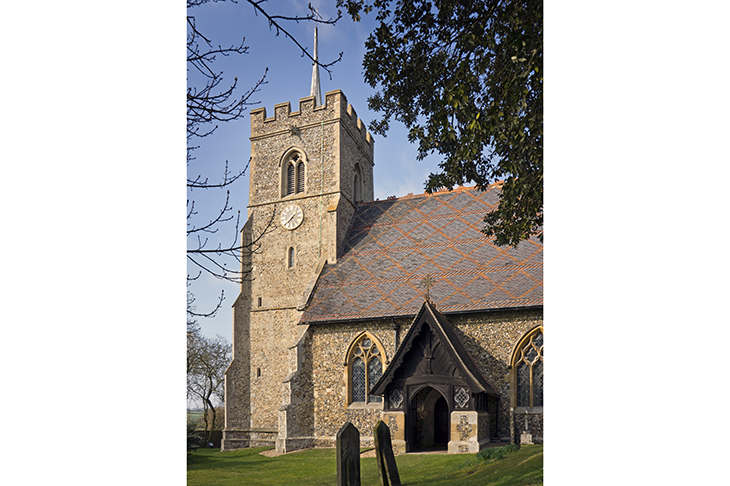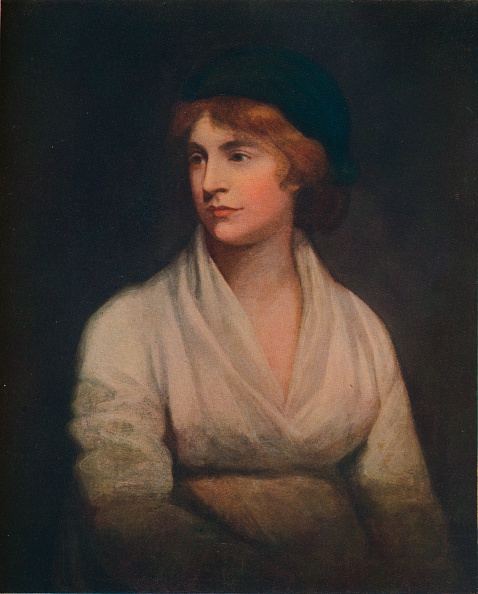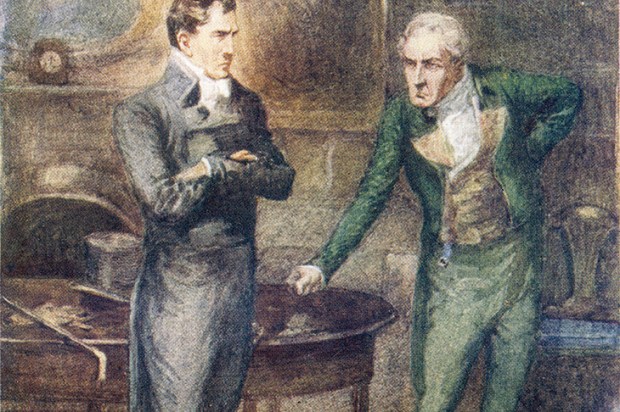How interesting is local history? The history of my Cotswold village — recently celebrating the centenary of the Armistice with a well-researched exhibition and booklet on events in the Sibfords in the first world war — fascinates me, but I am not sure that people from other parts of Oxfordshire, let alone further afield, would agree. This is the perennial problem of the local: unless it offers, in microcosm, insight into larger themes and topics, an element of ‘so-whatness’ colours the reader’s response.
Christopher Hadley’s Hollow Places takes its inspiration from a mysterious stone let into the wall in his Hertfordshire village. The carvings on it are somewhat indistinct, but they show a dragon, a floriated cross, symbols of the Evangelists and an angel bearing a tiny soul heavenwards in a napkin. The tomb-cover, for that is what it is, is made of grey-black Purbeck marble and commemorates one Piers Shonks. Local legend — and a now-vanished inscription recorded in Latin and English — has it that Piers slew a dragon. And, in the early 19th century when a mighty yew was felled in the parish, a cave, or at least a great hollow, was revealed at its roots. The lair of the dragon had been uncovered.
Hadley describes the book as ‘a historical detective story and a meditation on memory, belief, the stories we used to tell — and why they still matter’. He begins with the yew tree, brilliantly bringing to life the sharp winter morning on which the tree was felled, with much information about the many ancient yews of Britain, the reasons why they may have been planted, and the secret ways in which they continue to live on, even when apparent decrepitude sets in. The historical context for the felling of such a significant tree, growing most probably on an ancient charter boundary, is set out in detail: infuriatingly, the enterprise may simply have been a make-work for the unemployed agricultural labourers on parish relief.
Next, Hadley turns his attention to the rare and expensive marble of which the stone is made, and he travels down to Purbeck to talk to local quarrymen and sculptors. The mixed chalk and limestone geology of the dramatic Dorset coastline, the towering stone ruins of Corfe Castle set against a spring sky and the poetic names given to the different marble-beds — ‘feather, thornback and sky-bed’ — vividly sketch a different landscape from the patchwork of fields and ancient churches around Brent Pelham, Shonks’s home village. Hadley confidently deploys technical terms for the tools of the marble quarrier and sculptor’s trade, skilfully used in chiselling and sanding, and for the kinds of axe through which the mighty yew was brought down. The past is animated both with imagination and knowledge.
Tracing the route by which the marble might have found its way to Hertfordshire, via river and sea, the narrative returns home to look more closely at the stone itself, explaining the meaning of its symbols and its likely date, and correcting the many erroneous accounts and ‘terrible sketches’ that later antiquarian enthusiasts provided of its decoration. Shonks’s story, whether battling the dragon — here there is an excursus on the different types of dragon in European folklore — or a variant, in which he fights a local giant named Cadmus, is examined, and the meaning both of the tales and of their survival over the centuries is considered. In the final part of the book, Shonks himself is disinterred with much excitement from the historical record, as witness toa deed of land transfer somewhere between 1231 and 1242.
This reference is unearthed in the splendidly named Hairy Book or Liber Pilosus, so called for its binding which retains the hair of the goatskin from which its parchment is made; this is a cartulary, or collection of documents, pertaining to churches associated with St Paul’s Cathedral, London. Sadly, this collection of legal materials, though it preserves further references to Shonks, or his similarly named grandson, makes no mention of dragons or giants; the transactions in which Shonks is involved are ordinary enough for the 13th century. Hadley explains medieval legal custom and practice clearly and thoroughly, situating the Shonks family within their immediate social context and unsettling some of the more fanciful explanations for dragon-slaying legends.
Shonks and his story, the tomb and the now vanished yew are a starting point for a digressive and affectionate exploration of a local tradition that has survived for 800 years. Over more than 400 pages, the search for Shonks takes the author on many wandering ways. He speaks to historians, folklorists, artists and archivists along the journey, and his explanations are authoritative and well-researched. The writing, fine though it is in places, cannot always sustain the reader over long accounts of 18th-century antiquaries and their misapprehensions. But the book nevertheless meets the challenge of amplifying the local beyond the merely parochial. It chronicles, thoughtfully and pleasurably, the different kinds of work that the story and the memorialising objects associated with it do, and the vagaries of preservation that allowed it to leave its traces to be read across the palimpsest of an English village.
Got something to add? Join the discussion and comment below.
Get 10 issues for just $10
Subscribe to The Spectator Australia today for the next 10 magazine issues, plus full online access, for just $10.
You might disagree with half of it, but you’ll enjoy reading all of it. Try your first month for free, then just $2 a week for the remainder of your first year.














Comments
Don't miss out
Join the conversation with other Spectator Australia readers. Subscribe to leave a comment.
SUBSCRIBEAlready a subscriber? Log in